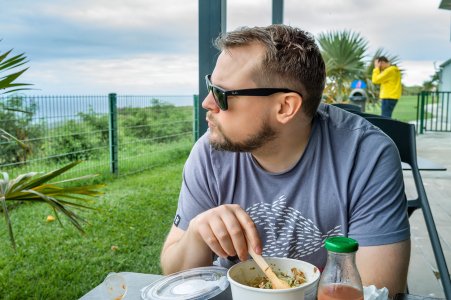@AndyCapp ... Again, you worry too much and are obsessed with numerical specifications.
There's a vanishing insignificance to shooting f/2 or f/1.4 at 1.2m (about 4 feet) distances with a 35mm lens. The average photograph for MOST people subjects is made at 2-3m (6-9 feet) distances: a 35mm lens set to f/2 and 7.5 feet nets approximately 18-19 inches of DoF. If, however, you're intent on doing copy work, well, then you are typically using a copy stand or tripod and if there's only 5cm DoF available, who cares? The subject and/or camera doesn't move, and you need LV or a Visoflex with an RF camera to focus accurately at f/2.
Of course, why you'd want to shoot such subjects at f/2 is beyond me because most 35mm lenses will perform better at f/4-f/8 anyway for such close-up work. You certainly don't want to do portraits of people with a 35mm lens at those close distances unless you happen to be a fan of big noses and chins due to foreshortening.
The point to fast lenses, in the day of film, was that it enabled you to overcome the film speed limitations of that day and get photos in low light circumstances that were otherwise unachievable. In this day of super high sensitivity digital cameras, such lenses give you a lot of aperture flexibility so you can make sensible choices as to what lens opening to use for any given situation.
Shooting portraits with a 35mm lens at 1.2m and f/2 is not generally a sensible choice. If it's some style option you want to pursue, well, then you will have to work at it to practice both focusing and framing to get whatever results you account as "good".
G


